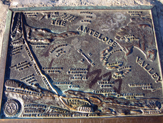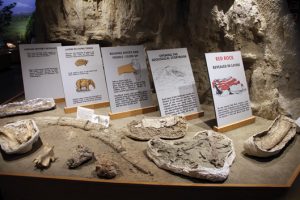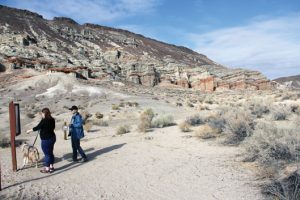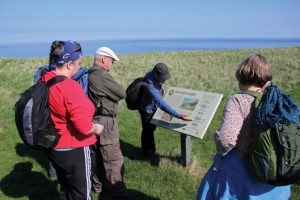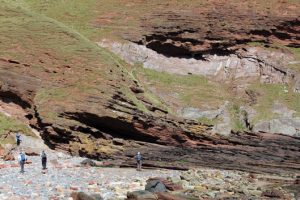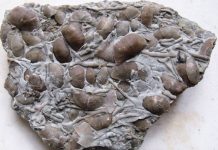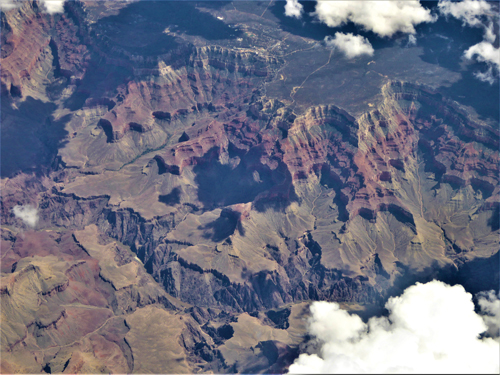
Editor’s Note: This is the first of a two-part series about examples of geotourism. To enjoy the second part, follow this link>>>
By Jim Brace-Thompson
Undoubtedly, thousands of years ago, Native Americans stood in awe before the hydrothermal wonders of what would be designated Yellowstone National Park in 1872, often proclaimed as the world’s first official national park. In 1869, John Wesley Powell led a three-month exploratory expedition down the Green and Colorado rivers, passing through the Grand Canyon. Today, families take their kids to stand atop the Grand Canyon’s rim or to gawk at colorful stone logs littering Petrified Forest National Park. While none of these folks, past or present, may have realized it, they all engaged in geotourism.
Tourism Versus Geotourism
Traditionally, tourism is often focused on history and culture. We travel to see a castle, a Civil War battlefield, an art museum, Broadway theatrical performances, or architectural marvels like the Chicago skyline or a Frank Lloyd Wright house. Or, tourism might focus on natural biotic communities of plants and animals: the desert in bloom, a field of wild buffalo, whale watching, trout fishing or hunting. It may also showcase local heritage and food: a strawberry or cherry festival, an Octoberfest, an art and craft fair, or a bluegrass festival.
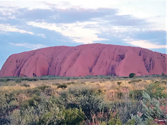
By contrast, geotourism focuses on historically substantial geological features and the processes that created and sculpted those features, be they mountains, volcanoes, canyons, fault scarps, or glaciers. It aims to conserve and promote a place as a so-called geosite. In addition to possessing inherent geological significance, a geosite may also be culturally significant within a particular group’s heritage. Take, for example, Uluru/Ayers Rock in central Australia. Geologically speaking, it is a unique formation called an inselberg and is one of Australia’s most instantly recognizable landmarks. Culturally speaking, it is sacred to the aboriginal Pitjantjatjara Anangu. This combination of factors has made it a World Heritage Site and a huge tourist draw.
While many tourists might stop to gawk and snap a selfie at Yosemite as a diversion during a trip through California, geotourism invites them to make Yosemite the focal point of the trip and pause to deeply consider the geology of the place and its past and ongoing cultural impact. It includes conscious efforts to promote geological underpinnings engagingly via placards, view-points, visitor centers, trails, designated monument or park status, and so forth. In short, it promotes the effort to make such places the “main attraction” of a vacation, not merely a diversion or side trip, with a focus on education, scientific appreciation, and learning.
Emergence of Geotourism
As I’ve noted, geotourism has always been with us, but as an organized activity centered on trips targeted primarily at geological destinations, it is a relatively new phenomenon, and two pioneers of this form of vacationing are Thomas Williams in the United States and Angus Miller of Scotland.
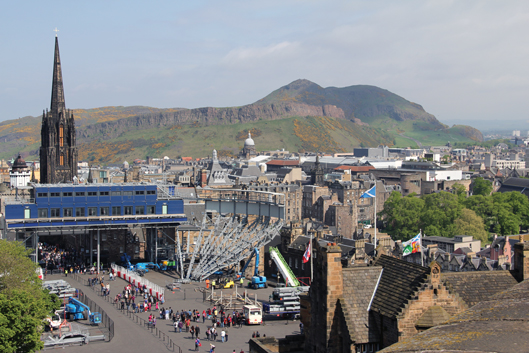
While I have not yet had the pleasure to meet Thomas Williams, I have enjoyed a geotour with Angus Miller, who told me about Tom. A retired engineering geologist, Williams has 40 years of experience as a professional geologist and teacher at colleges in the San Francisco Bay area. He founded and runs “Williams GeoAdventures” (www.geology-adventures.com) and has ventured far and wide, leading 44 geotours since 1997. These trips included several spots in the American West (the Grand Canyon, Death Valley, Lassen Volcanic National Park), Scotland, Northern Italy and Slovenia, Iceland, and New Zealand.
Williams notes on his website, “I pride myself in custom-designing GeoAdventures for folks who love geology, but we do so much more. By partnering with top-notch expert local guides, each trip combines not only fabulous geology and the beauty of the natural world but offers experiences in each region’s historic, cultural, and gastronomic delights. And we always have a lot of fun!”
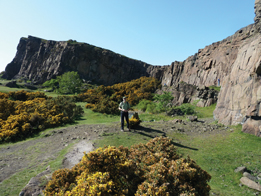
Another part of Williams’ process appears to involve picking an intriguing site rich in geology, then posting a general time frame and asking that folks contact him to be included on his “Interested Parties” list. Once that list reaches capacity, he firms up details, contacts people, and asks them to put their money where their mouth is via deposits. He’ll then announce the trip to the general public should any open spaces remain.
Williams has partnered with Miller on his trips to Scottish localities. While visiting my daughter’s family in Edinburgh, Scotland, my wife Nancy and I engaged in geotourism with Miller and first got an in-depth appreciation of geotourism as distinct from “regular” tourism.
In addition to giving talks and outdoor workshops, Miller teaches adult education courses for the Centre for Open Learning at the University of Edinburgh and leads geology walks for the Adult Education Programme with the City of Edinburgh Council. He has widely shared his knowledge, working with the Edinburgh International Science Festival, the Dynamic Earth museum, Edinburgh Geological Society, Scottish Earth Science Education Forum, and Scottish Geodiversity Forum, to name a few. Deservedly so, these activities earned him the Royal Scottish Geographical Society’s 2013 President’s Medal.
Like Williams, Miller also created his own wee company called “Geowalks” (www.geowalks.co.uk) on April 1, 1998, with a tour of Arthur’s Seat, or “my local volcano,” as he describes it. Arthur’s Seat towers over the city of Edinburgh as an instantly recognizable landform. Since forming his company, Miller has led thousands of tours to both locals and visitors from around the world to introduce Scotland’s geological wonders.
While Williams focuses on fairly extensive, multi-day adventures, Miller provides a range. Some of his excursions are low-key, nonstrenuous day walks within the immediate vicinity of Edinburgh and central Scotland “with an emphasis on the view and the big stories.” Others involve “walking holidays” where groups are guided on a whole series of walks to thoroughly explore a designated area over a more extended period at places across Scotland. Miller describes his Geowalks as “geology with a human face” that allows him to share his passion for Scotland’s geological heritage.
Author: Jim Brace-Thompson
 Jim began and oversees the AFMS Badge Program for kids, has been inducted into the National Rockhound & Lapidary Hall of Fame within their Education Category, and is the president-elect for the American Federation of Mineralogical Societies.
Jim began and oversees the AFMS Badge Program for kids, has been inducted into the National Rockhound & Lapidary Hall of Fame within their Education Category, and is the president-elect for the American Federation of Mineralogical Societies.
Contact him at jbraceth@roadrunner.com.
If you enjoyed what you’ve read here we invite you to consider signing up for the FREE Rock & Gem weekly newsletter. Learn more>>>
In addition, we invite you to consider subscribing to Rock & Gem magazine. The cost for a one-year U.S. subscription (12 issues) is $29.95. Learn more >>>


